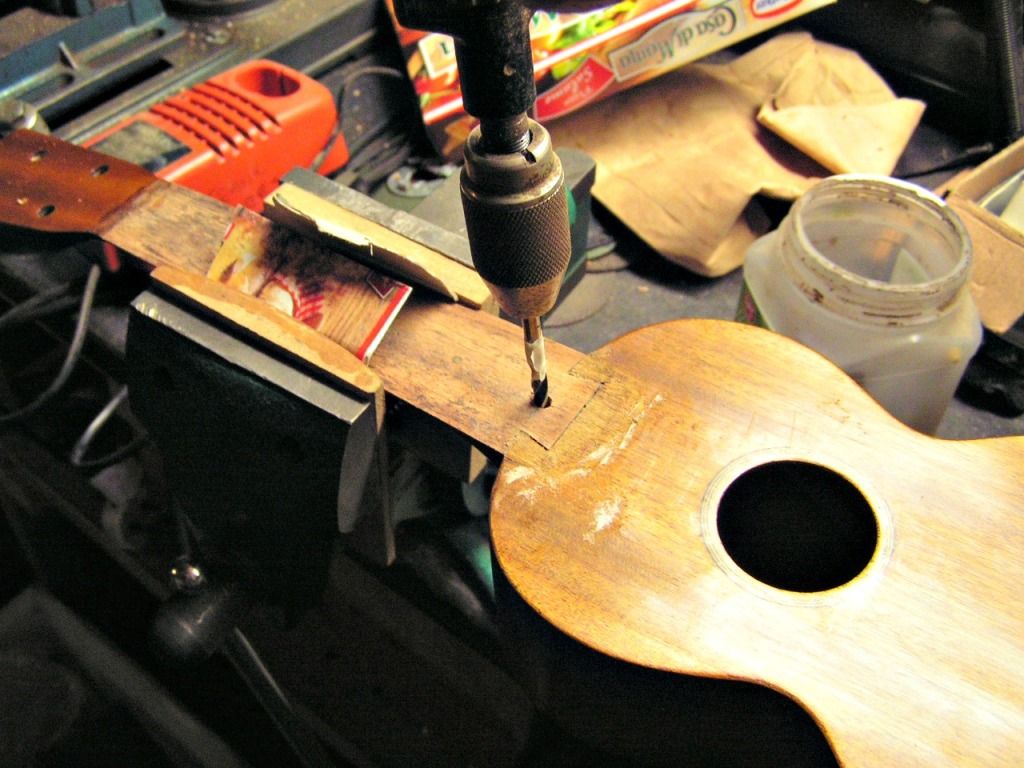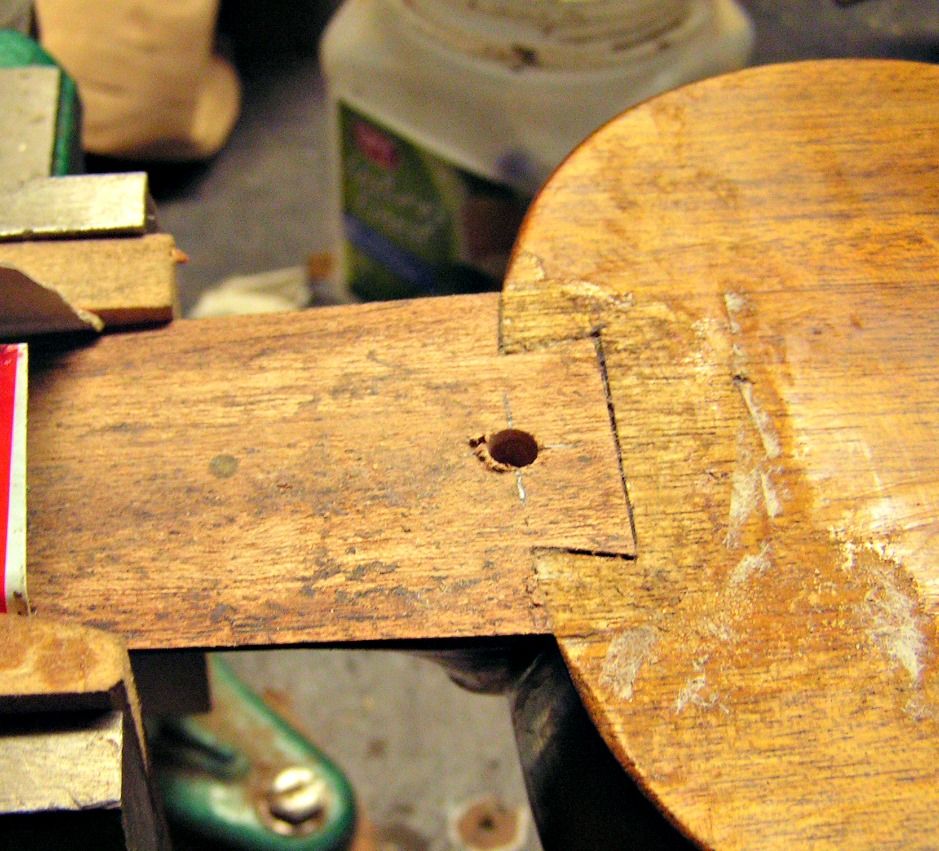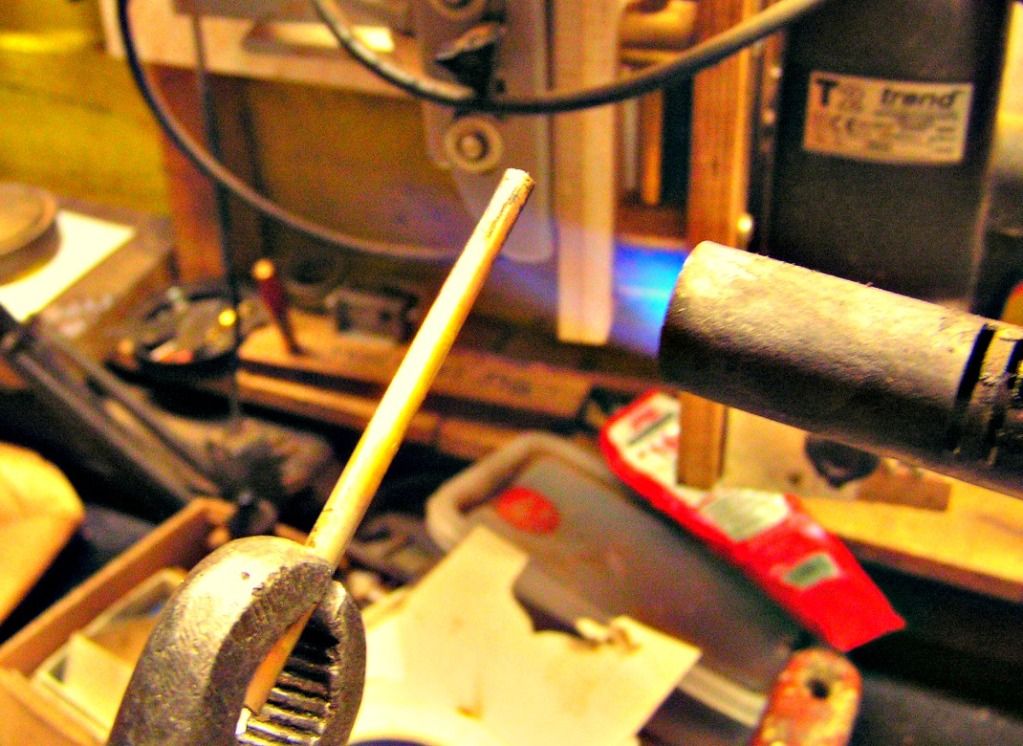Timbuck
Well-known member
Last week while I was suffering with severe back pain, I put together a neck and body on a soprano..My concentration must have been lacking a bit co's when I got round to fitting the bridge today ..I realised that I'd fitted the wrong neck  ..and it was out of line with the top of the uke..Not a lot! I could have made the saddle a little lower than normal to make it work..but it was just not right..So I decide to remove the neck and start again with the right one...if this was a bolt on neck then it would have been a dead easy to fix..But it's a dovetail glued well in with Titebond..I don't have steaming set up anymore co's I got rid of it a couple of years back in a clearout.. so I used a method I dream't up last time I had to do this..It works like this.
..and it was out of line with the top of the uke..Not a lot! I could have made the saddle a little lower than normal to make it work..but it was just not right..So I decide to remove the neck and start again with the right one...if this was a bolt on neck then it would have been a dead easy to fix..But it's a dovetail glued well in with Titebond..I don't have steaming set up anymore co's I got rid of it a couple of years back in a clearout.. so I used a method I dream't up last time I had to do this..It works like this.
First remove fretboard with hot scraper heated up on heatgun and be carefull not to gash your hand on the scraper edge (Like I did)

Next drill a 5mm hole into the heel.

Here is a close up of the hole it go's down to about 7mm from heel end just enough to go thro the male dovetail spline

First remove fretboard with hot scraper heated up on heatgun and be carefull not to gash your hand on the scraper edge (Like I did)

Next drill a 5mm hole into the heel.

Here is a close up of the hole it go's down to about 7mm from heel end just enough to go thro the male dovetail spline

Last edited:



